Week 07 :: Generative Data Forms
<< back to Procedural Morphology homepage
Class notes
Example: Force Intensity and Direction Inspector
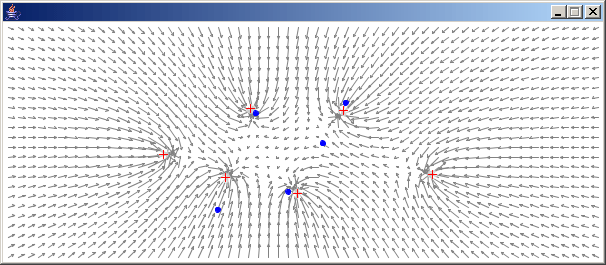
The force applied to the environment is not a pure intensity map. The force is also directional. This example uses a grid of arrows to help visualize this. The arrow represents the direction of acceleration at that point in space. Balls rolling around this environment maintain an internal velocity, the the acceleration at their location acts to redirect their motion. Watch as a ball moving against the arrows will slow. Balls moving with the arrows speed up.
Example: Simplified Forces

Example:

see also>
Example: Remapping the Force
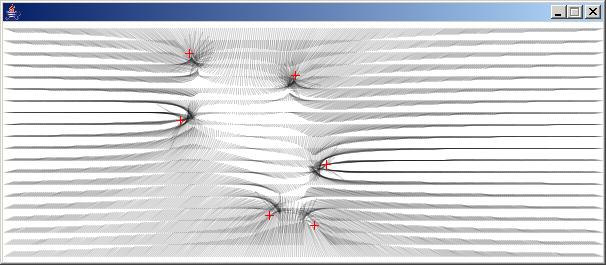
Here the dynamic attractors affect a new kind of field revealing a different set of visual relationships. A grid of lines is drawn from a fixed position to the point of acceleration from that point. How you choose to render the available forces represents a collaborative system for generating form. The presence of the attractors alone will not generate the shape. Without their presence, the line system would not be capable of producing anything.
Example: Remapping the Force to find New Relationships
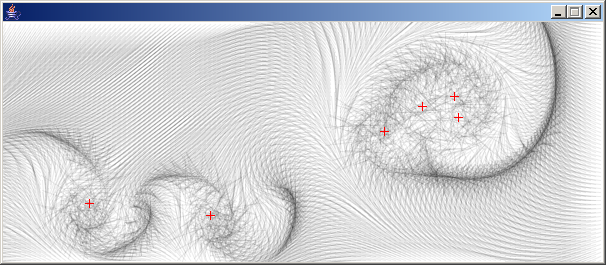
It is possible to implement transformations in the source data. Rather than directly rendering the force, the acceleration due to the gravitational pull is mapped into the rotation of the lines. The result reveals boundary conditions between the relative power of the different attractors. The underlying influence of the attractors has not changed.
Example: System inflected by the force
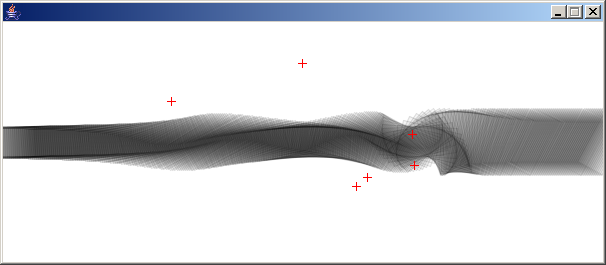
In this example, a rectagle moves across the field of data, and reacts to the local acceleration. However, the acceleration is added to a rotational acceleration in the rectangle. Again, the underlying influence of the attractors has not changed.
Changing the Input: Images
Example: Alternate force (image)
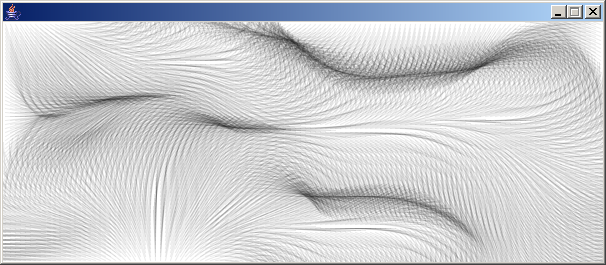
The drawing mechanism from the example above is used on a different input source. This example substitues an image for the dynamics attractors as the generator of the field. In this case, the brightness of the pixel drives the rotation of the line. Again, the boundaries between high intensities is mapped as darker lines due to the change in overlapping rotation.
Example: Alternate force 2 (image)
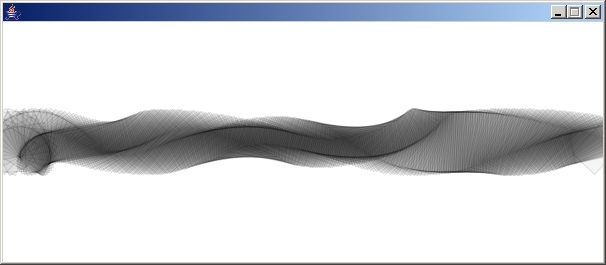
The drawing mechanism from the previous example is plotted against the image set from the last example.
Assignment for next week.
You will choose one topic from Part 3 of the class to explore for your 5th sketch. You will complete 5 sketches in total.







